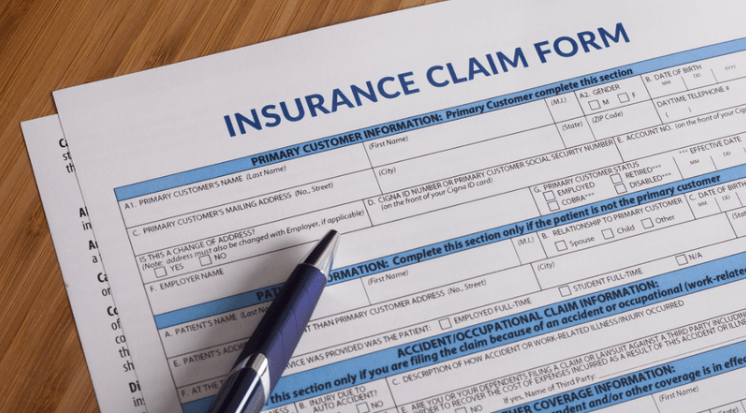insurance claim, filing, process, coverage, policy, provider, documentation, claim form, deductible, damage, loss, proof, benefits, claim status, approval, rejection, appeal, payment, financial security, settlement
Understanding the Insurance Claim Process
insurance claim, process, policy, coverage, provider, financial security, benefits, protection
Filing an insurance claim is a way for policyholders to access their coverage benefits when a loss or damage occurs. This process involves notifying the provider about the incident and supplying necessary information to support the claim. For those with valid policy coverage, filing a claim ensures they can receive financial security to cover expenses related to the incident. Knowing each step in the process can make it easier and faster to access benefits when needed.
Step 1: Review Your Insurance Policy
review, insurance policy, coverage, benefits, protection, deductible, provider, claim process
The first step in filing an insurance claim is to carefully review your insurance policy. This allows you to confirm your coverage, including the specific events covered, your deductible amount, and the maximum benefits available. Understanding these details helps you determine whether you are eligible to file a claim and what expenses may be covered. Reviewing your policy also helps avoid confusion and ensures that you’re well-prepared for the claim process.
Step 2: Report the Incident to Your Insurance Provider
report, incident, provider, claim, policyholder, coverage, insurance claim, process, damage, loss
Once a loss or damage occurs, it’s essential to report the incident to your insurance provider as soon as possible. Prompt reporting helps the insurer start the claim process quickly and ensures timely support. Policyholders should contact their provider and provide basic details about the incident, including when and where it happened. Early reporting also prevents delays in accessing coverage and gives the provider an accurate record of the event.
Step 3: Gather Documentation and Proof of Loss
gather, documentation, proof of loss, insurance claim, claim form, damage, photos, receipts, provider
For a successful claim, proper documentation is essential. Policyholders should gather all necessary proof of loss to support their claim, which may include photos of damage, receipts, police reports (if applicable), and any relevant invoices. Some insurance companies require a claim form to be completed, providing further details about the incident. By submitting comprehensive and accurate documentation, you can help ensure a smoother claim process and minimize the risk of delays.
Step 4: Complete and Submit the Claim Form
complete, submit, claim form, insurance claim, provider, coverage, details, benefits
After gathering documentation, policyholders need to complete the claim form provided by their insurance provider. This form requires specific details about the incident and any related coverage information. Once filled out, the form and supporting documents should be submitted to the provider through the designated channels, which may include online portals, email, or physical mail. Accurately submitting all required documents helps avoid delays in processing and allows the provider to assess your claim more efficiently.
Step 5: Work with the Insurance Adjuster
work, insurance adjuster, claim process, provider, coverage, assessment, damage, policyholder, claim status
In some cases, an insurance adjuster will be assigned to assess the claim further. Adjusters may contact policyholders to schedule a visit, inspect the damage, and verify the details provided in the documentation. This assessment helps the provider determine the appropriate level of coverage based on the loss. Cooperating with the adjuster and providing any additional information requested can expedite the claim process and bring the policyholder closer to settlement.
Step 6: Monitor Your Claim Status
monitor, claim status, insurance claim, provider, process, approval, rejection, communication
After submitting your claim, it’s important to monitor the claim status through regular communication with the provider. Most insurance companies offer tracking options via online portals or customer service hotlines. Keeping an eye on the status allows you to address any potential issues promptly, such as missing documents or additional requirements. Monitoring the status of your claim ensures that you remain informed about progress toward approval or further steps needed.
Step 7: Understand Claim Approval or Rejection
claim approval, rejection, insurance claim, provider, process, coverage, policyholder, appeal
Once the provider reviews the claim, they will either approve or reject it based on the coverage details in your policy. Claim approval leads to payment, while a rejection typically includes an explanation of why the claim wasn’t covered. Policyholders should carefully review any rejection notices, as claims can be denied for reasons such as lack of documentation, insufficient coverage, or late filing. Understanding the reasons behind approval or rejection is key to managing expectations and knowing when further steps are necessary.
Step 8: Appeal a Rejected Claim if Necessary
appeal, rejected claim, insurance claim, process, provider, documentation, benefits
If your claim is rejected and you believe it was unjustly denied, you may have the option to appeal. This process usually requires submitting additional documentation or providing a more detailed explanation of the incident. Most insurance providers offer a specific appeals process to review denied claims, allowing policyholders another chance to secure benefits. Filing an appeal can help correct misunderstandings and, in some cases, lead to a favorable outcome.
Step 9: Receive Payment
receive payment, insurance claim, provider, settlement, policyholder, benefits, financial security
After the claim is approved, the provider will process the payment to the policyholder. This settlement can be issued as a direct deposit, check, or another payment method. Receiving payment marks the final step of the claim process, allowing policyholders to cover expenses related to the loss or damage. This final payout provides financial security and fulfills the benefits promised under the insurance policy.
FAQs on How to File an Insurance Claim
1. What’s the first step in filing an insurance claim?
The first step is to review your insurance policy to understand your coverage and verify that your loss or damage is covered.
2. Why is documentation important for an insurance claim?
Documentation provides essential proof of loss, supporting your claim with evidence like photos, receipts, and police reports.
3. How long does it take to process an insurance claim?
Processing times vary, but monitoring the claim status and providing accurate documentation helps speed up the claim process.
4. What should I do if my claim is rejected?
If a claim is rejected, you may appeal by submitting additional documentation or clarifying information to the provider.
5. How will I receive payment after my claim is approved?
Upon claim approval, payment is issued by the provider, either as a direct deposit, check, or other method, covering the approved expenses.



